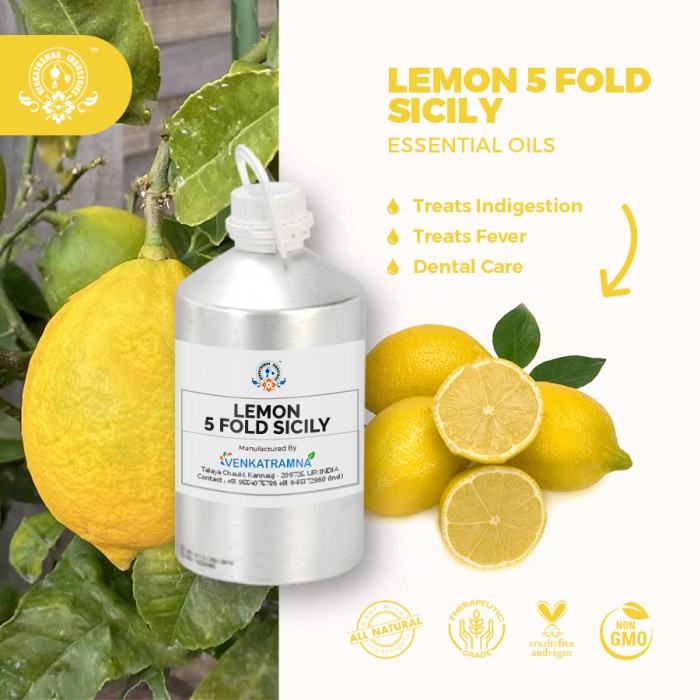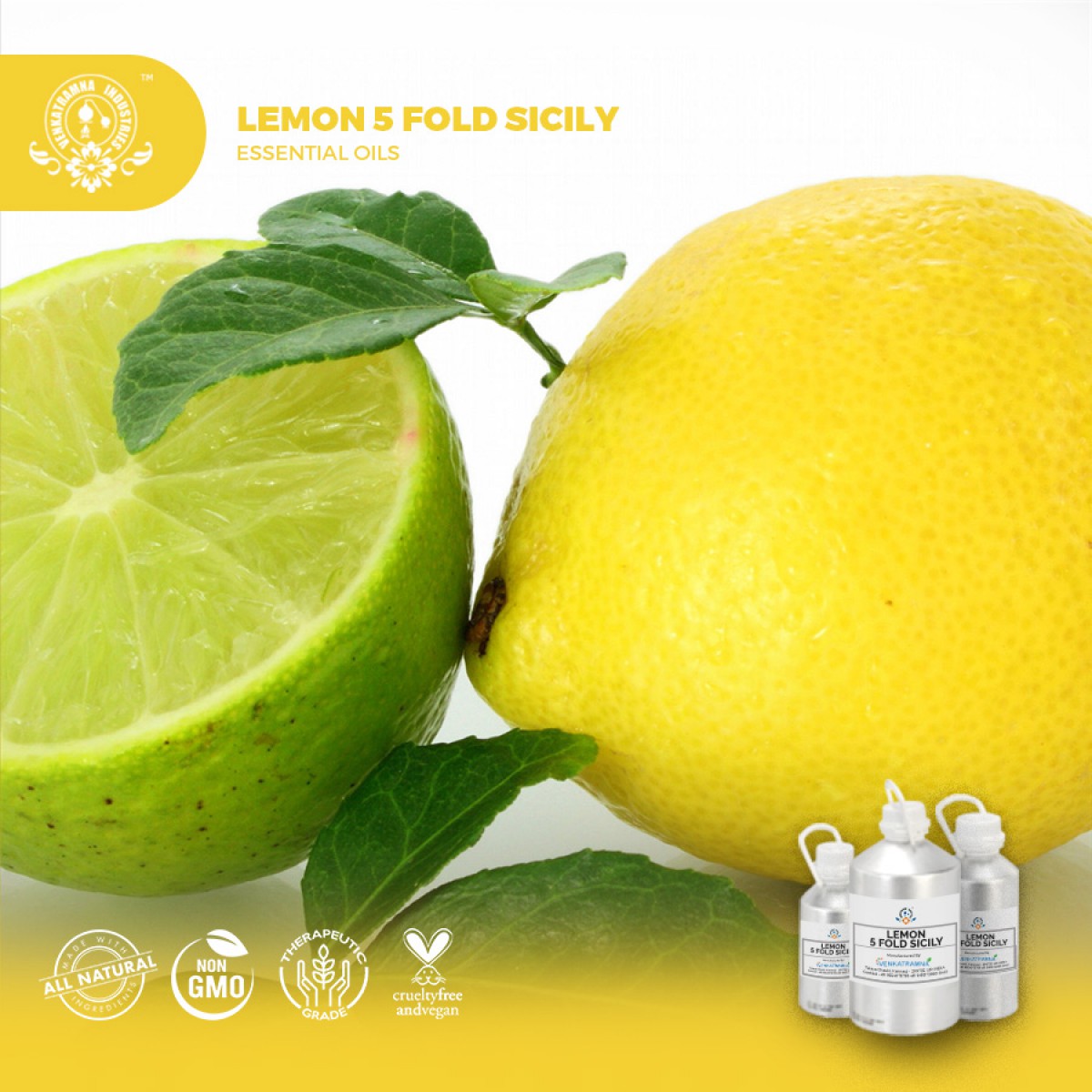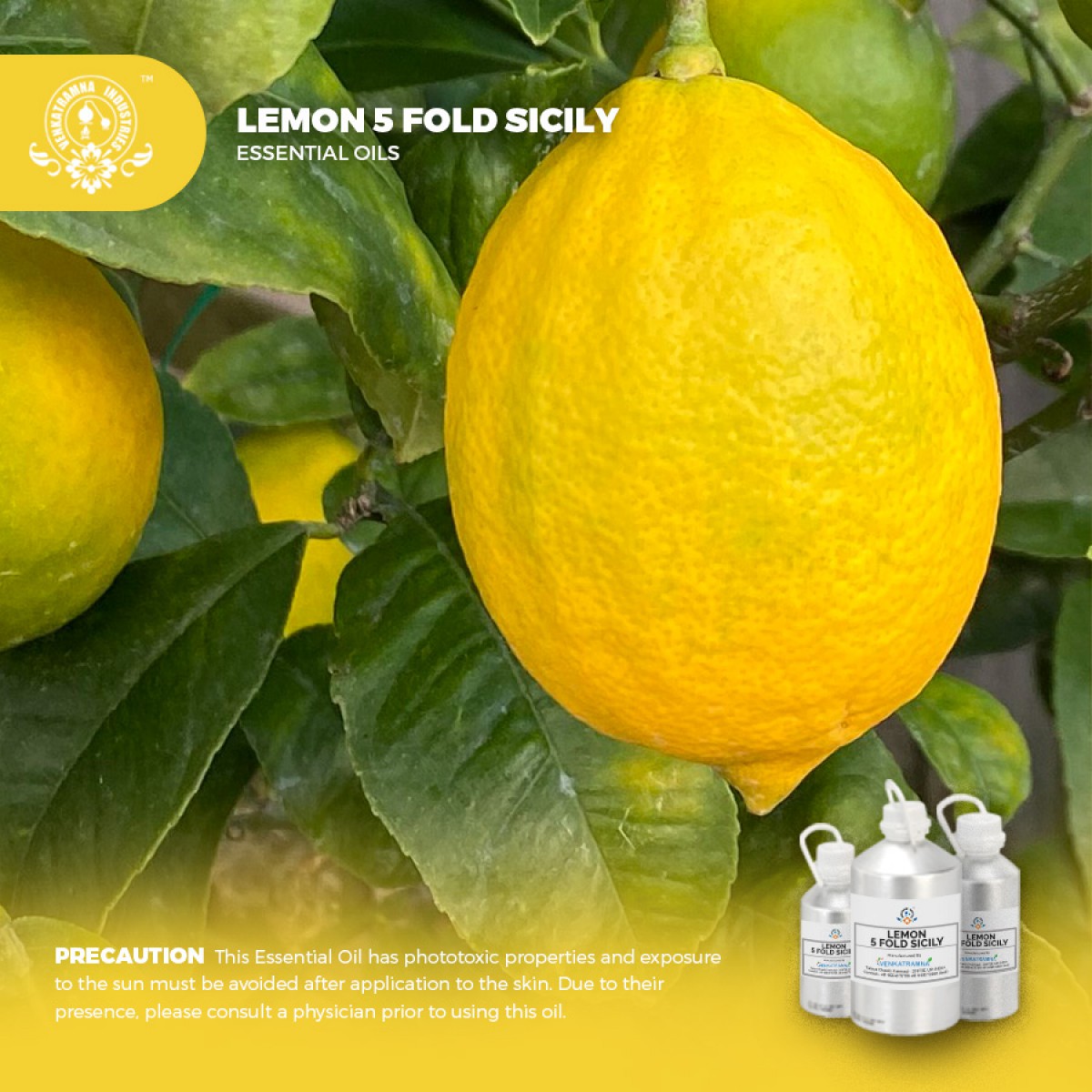Botanical Name: Citrus limonum Common name: lemon Plant family: Read More
|
Botanical Name: |
Citrus limonum |
|
Common name: |
lemon |
|
Plant family: |
Rutaceae |
|
Genus: |
Citrus |
|
Appearance/Color: |
A thin,
colorless to greenish yellow liquid. |
|
Odor: |
A top note with a
strong aroma, it has a strong bright lemony scent. |
|
Blends With: |
Bergamot, Lime,
Mandarin and Orange |
|
Origin: |
Italy |
|
Source: |
Fruit Peel |
|
Method of
Extraction: |
Steam Distillation |
The health benefits of lemon are
due to its many nourishing elements like vitamin C, vitamin B6, vitamin A,
vitamin E, folate, niacin, thiamin, riboflavin, pantothenic acid, copper,
calcium, iron, magnesium, potassium, zinc, phosphorus, and protein. It is a
fruit that contains flavonoids, which are composites that contain antioxidant
and cancer-fighting properties. It helps to prevent diabetes, constipation,
high blood pressure, fever, indigestion, as well as improves the skin, hair,
and teeth. Studies conducted at the American Urological Association highlight
the fact that lemonade or lemon juice can eliminate the occurrence of kidney
stones by forming urinary citrate, which prevents the formation of crystals.
The origin of the lemon is
unknown, though lemons are thought to have first grown in Assam (a region in
northeast India), northern Burma or China. A study of the genetic origin of the
lemon reported it to be hybrid between bitter orange (sour orange) and citron.
Lemons entered Europe near
southern Italy no later than the second century AD, during the time of Ancient
Rome. However, they were not widely cultivated. They were later introduced to
Persia and then to Iraq and Egypt around 700 AD. The lemon was first recorded
in literature in a 10th-century Arabic treatise on farming, and was also used
as an ornamental plant in early Islamic gardens. It was distributed widely
throughout the Arab world and the Mediterranean region between 1000 and 1150.
Lemons are ready to pick as soon
as they are yellow or yellow green in appearance and firm. The fruit will be 2
to 3 inches in size. It’s better to wait until they are the right size and not
worry so much about color than to wait for them to be completely yellow.
Unlike our other Lemon Essential Oils this means that the oil has more to give but also has a certain level of phototoxicity, which means it may irritate the skin when you go out in the sunshine. You should not use the oil undiluted and be careful when going out into the sun if using on the skin.
DISCLAIMER
The complete range of conditions
or methods of use are beyond our control therefore we do not assume any
responsibility and expressly disclaim any liability for any use of this
product. Information contained herein is believed to be true and accurate however,
all statements or suggestions are made without warranty, expressed or implied,
regarding accuracy of the information, the hazards connected with the use of
the material or the results to be obtained from the use thereof. Compliance
with all applicable federal, state, and local laws and local regulations
remains the responsibility of the user.
The FDA has not evaluated the
statements on this website. No claims are made by Venkatramna Industries as to
the medicinal value of any products from vriaroma.com or by us. The information
presented here is for educating our customers about the traditional uses of
essential oils and is not intended to diagnose, treat, cure, or prevent any
disease. You are responsible for understanding the safe application of these products.
If you have any questions, please call or email us for further information.
As per NAHA guidelines, New Directions Aromatics
(NDA) does not recommend the ingestion of essential oils. It is imperative to
consult a medical practitioner before using Essential Oils for therapeutic
purposes. Pregnant and nursing women and those taking prescription drugs are
especially advised not to use this product without the medical advice of a
physician. The oil should always be stored in an area that is inaccessible to
children, especially those under the age of 7.
Lemon Essential Oil has been
historically recognized as a cleanser. Its active chemical components
contribute to its traditional therapeutic benefits giving its reputation of
being an invigorating, cleansing and purifying oil. Lemon Oil’s high
vitamin content boosts immunity by stimulating the body’s ability to combat
harmful bacteria.
These healing benefits can be
attributed to the oil’s anti-inflammatory, astringent, analgesic, stimulant,
antiseptic, soothing, energizing, and balancing activities, among other
valuable properties. Its anti-bacterial properties can sanitize not only
wounds but also objects.
Lemon 5-fold Sicily Essential Oil is
reputed as being antiseptic and having refreshing and cooling properties. Its
constituents make it ideal for use in cosmetics, aromatherapy, massage, and
home cleaning products to purify the air as well as surfaces. Its use in
aromatherapy can reduce fever and flu and relieve throat infections and cough.
By clearing the nasal passages, it promotes easier breathing for those with
respiratory issues or infections. This rejuvenating, clean-smelling essential
oil is commonly used to enhance concentration and energy.
On skin and hair, it can be used for
its cleansing effect, as well as for treating cuts and boils. When
diffused indoors, Lemon Essential Oil eliminates toxins in both the air and on
surfaces. It can be used as a non-toxic cleaner and air freshener throughout
the home for a mood-elevating, cooling, and revitalizing effect. It has a
calming effect that can subdue negative moods such as anxiety.
Its astringent properties
rejuvenate dull complexions, making Lemon Oil effective for restoring the
lustre to tired or sagging skin marking its use in skin care applications.
COMMON
USAGE
·
Treats Indigestion
·
Treats Fever
·
Dental Care
·
Hair Care
·
Skin Care
·
Cures Burns
·
Internal Bleeding
·
Promotes Weight Loss
·
Soothes Respiratory Disorders
·
Treats Cholera
·
Relaxes Foot
·
Treats Rheumatism
·
Reduces Corns
·
Throat Infections
·
Controls Blood Pressure
Ingredients:
| S. No: | Key Constituents | Strength (%) |
| 1 | (þ)-Limonene | 56.6–76.0 |
| 2 | b-Pinene | 6.0–17.0 |
| 3 | g-Terpinen | 3.0–13.3 |
| 4 | a-Terpineol | 0.1–8.0 |
| 5 | a-Pinene | 1.3–4.4 |
| 6 | Geranial | 0.5–4.3 |
| 7 | Sabinene | 0.5–2.4 |
| 8 | p-Cymene tr | 2.3 |
| 9 | b-Myrcene tr | 2.2 |
| 10 | Neral | 0.4–2.0 |
| 11 | Terpinen-4-ol tr | 1.9 |
| 12 | Neryl acetate | 0.1–1.5 |
| 13 | Oxypeucedanin | 0.09–0.82 |
| 14 | Bergamottin | 0.16–0.54 |
| 15 | 5-Geranoxy-7-methoxycoumarin | 0.18–0.28 |
| 16 | Citropten | 0.05–0.17 |
| 17 | Byakangelicol | 0.006–0.16 |
| 18 | 8-Geranyloxypsoralen | 0.01–0.045 |
Safety summary
Liquid may be irritating to skin
and eyes. It contains D’Limonene (CAS: 5989-27-5), a known sensitizer.
D’Limonene (1, 8-(9)-p Menthadiene):
·
LD50 (Oral): 4,400 to 5,100 mg/kg [Rat]
·
LD50 (Dermal): > 5,000 mg/kg [Rabbit]
·
LD50: 5,600 to 6,600 mg/kg [Mice]
·
Medical Information: 0.5 to 5.0 g/kg may
cause human death.
Organ-specific effects
·
Eyes: May cause burning, redness pain.
·
Skin: May cause temporary redness
(burning), mild local irritation and sensitization. Prolonged contact with skin
may cause dermatitis.
·
If Ingested, may cause GI irritation, abdominal
pain, nausea, vomiting, diarrhea, and dizziness.
·
By Inhalation, irritant to respiratory tract,
may cause sore throat, coughing, shortness of breath, dizziness, and nausea.
Irritation of eyes, skin and mucous membranes.
Systemic effects
·
Prolonged contact with skin may cause
dermatitis. If Ingested, may cause GI irritation, abdominal pain, nausea,
vomiting, diarrhea, and dizziness.
·
By Inhalation, irritant to respiratory tract,
may cause sore throat, coughing, shortness of breath, dizziness, and nausea.
Irritation of eyes, skin and mucous membranes.
·
Carcinogenicity:
·
NTP Monograph: None established
·
IARC Monograph: None established
·
Other Effects: None established
·
Ecotoxicity: Harmful to aquatic life. May have
long lasting effects.
·
Bioaccumulation: No data available
·
Mobility in soil: No data available
·
Persistence and degradability: No data available
·
PBT and vPvB assessment: No data available
·
Avoid direct exposure into water streams and
ground water sources.





 MSDS-Lemon.pdf
MSDS-Lemon.pdf




